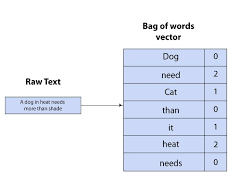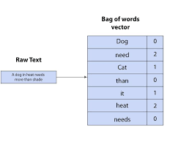Imagine you’re a financial analyst tasked with comparing the GDP of France and Italy over the last five years. You query a language model, asking:
“What are the current GDP figures of France and Italy, and how have they changed over the last five years?”
Using Retrieval-Augmented Generation (RAG), the model first retrieves relevant information from external sources, then generates this response:
“France’s current GDP is approximately $2.9 trillion, while Italy’s is around $2.1 trillion. Over the past five years, France’s GDP has grown by an average of 1.5%, whereas Italy’s GDP has seen slower growth, averaging just 0.6%.”
In this case, RAG improves the model’s accuracy by incorporating real-world data through a single retrieval step. While effective, this method can struggle with more complex queries that require multiple, dynamic pieces of real-time data.
Enter Retrieval Interleaved Generation (RIG)!
Now, you submit a more complex query:
“What are the GDP growth rates of France and Italy in the past five years, and how do these compare to their employment rates during the same period?”
With RIG, the model generates a partial response, drawing from its internal knowledge about GDP. However, it simultaneously retrieves relevant employment data in real time. For example:
“France’s current GDP is $2.9 trillion, and Italy’s is $2.1 trillion. Over the past five years, France’s GDP has grown at an average rate of 1.5%, while Italy’s growth has been slower at 0.6%. Meanwhile, France’s employment rate increased by 2%, and Italy’s employment rate rose slightly by 0.5%.”
Here’s what happened:
RIG allowed the model to interleave data retrieval with response generation, ensuring the information is up-to-date and comprehensive. It fetched employment statistics while continuing to generate GDP figures, ensuring the final output was both accurate and complete for a multi-faceted query.
What is Retrieval Interleaved Generation (RIG)?
RIG is an advanced technique that integrates real-time data retrieval into the process of generating responses. Unlike RAG, which retrieves information once before generating the response, RIG continuously alternates between generating text and querying external data sources. This ensures each piece of the response is dynamically grounded in the most accurate, up-to-date information.
How RIG Works:
- Query Submission: The user submits a question.
- Partial Response Generation: The model generates a partial answer based on its internal knowledge.
- Real-Time Data Retrieval: The model queries external data to fill in gaps or update incomplete information.
- Interleaving: The model alternates between generating more text and retrieving additional data as needed.
- Final Response: Once all necessary data is integrated, the model completes the answer.
For example, when asked for GDP figures of two countries, RIG first retrieves one country’s data while generating an initial response and simultaneously fetches the second country’s data for a complete comparison.
Why Use RIG?
- Reduced Hallucination: By continuously querying external sources, RIG reduces the risk of providing incorrect or outdated information.
- Enhanced Accuracy: Real-time retrieval ensures that responses are based on the latest available data.
- Real-Time Adaptation: The interleaving process allows the model to adapt on the fly, handling multi-part or evolving queries with greater precision.
Real-World Applications of RIG RIG’s versatility makes it ideal for handling complex, real-time data across various sectors, such as:
- Finance: Delivering accurate, real-time economic insights like stock prices or interest rates.
- Healthcare: Retrieving the latest clinical trial data and medical studies to offer real-time medical advice.
- Scientific Research: Providing up-to-date research findings to adjust responses as more data becomes available.
Challenges of RIG While promising, RIG faces a few challenges:
- Latency: Real-time data retrieval may increase response times.
- Resource-Intensity: Interleaving requires more computational power.
- Data Reliability: RIG is dependent on the availability and quality of external data sources.
As AI evolves, RIG is poised to become a foundational tool for complex, data-driven tasks, empowering industries with more accurate, real-time insights for decision-making.













